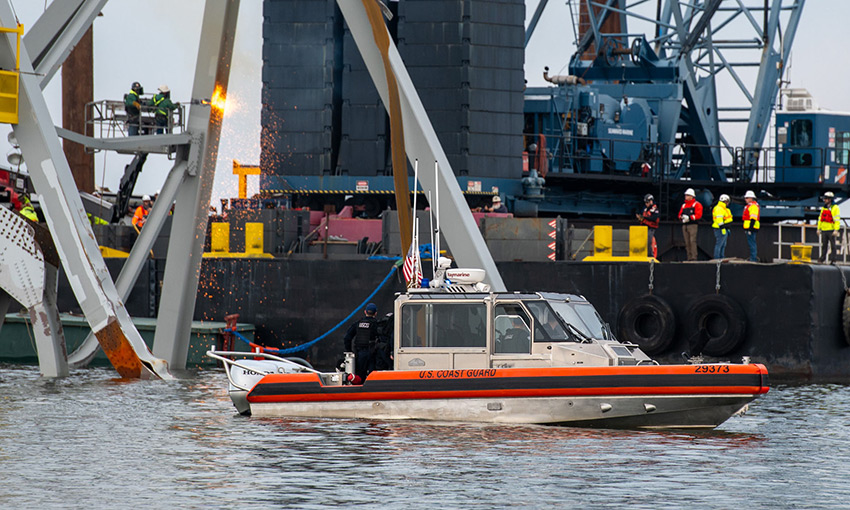THE first pieces of the collapsed Francis Scott Key Bridge in Baltimore were removed over the weekend, following the arrival of 1000-tonne and 600-tonne capacity floating cranes.
It is now a week since one of the pylons of the bridge was struck by the powerless, Maersk-chartered, 9962 TEU Dali, which had just departed from the Seagirt Marine Terminal on a voyage to Colombo on Maersk’s TP12 loop. The ship was able to issue a mayday call that enabled police to block traffic at either end of the 1.6-mile bridge prior to its collapse, but eight workers fell into the Patapsco River, with six losing their lives.
The U.S. Army Corps of Engineers (USACE), charged with the wreckage removal, said the situation was complicated by the fact that Dali‘s bow is technically aground in the channel. Vice Adm. Peter Gautier told a press conference the ship is pinned to the bottom by the weight of the bridge and cannot move.
There are no indications of damage below the waterline but the wreckage of the span will have to be removed before the salvor, Resolve Marine, can recover the ship from the channel. A temporary channel has been opened but this has insufficient depth for anything other than craft working on the assistance effort. Six commercial vessels remain trapped in the port of Baltimore.
Bloomberg reported that other US East Coast ports are scrambling to modify their operations to handle cargo diverted from Baltimore. The Port of Virginia, with terminals at the mouth of the Chesapeake Bay near Norfolk, opened a gate yesterday [1 April] at 5 a.m. — an hour earlier than usual — to help accommodate more truckers.
The Port of New York and New Jersey, which is expecting additional cargo including automobiles, is working to allow quick access for transport companies that usually go through Baltimore. Railroad company CSX is expanding its services, too, the news service reported.
Local officials said the ports have been handling about 20% below the throughput volumes experienced during the COVID cargo peaks and so are confident of coping with Baltimore overflow.





